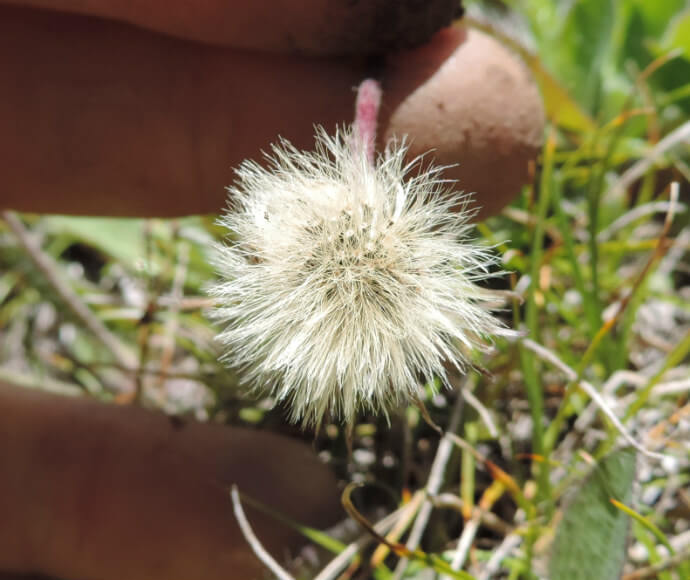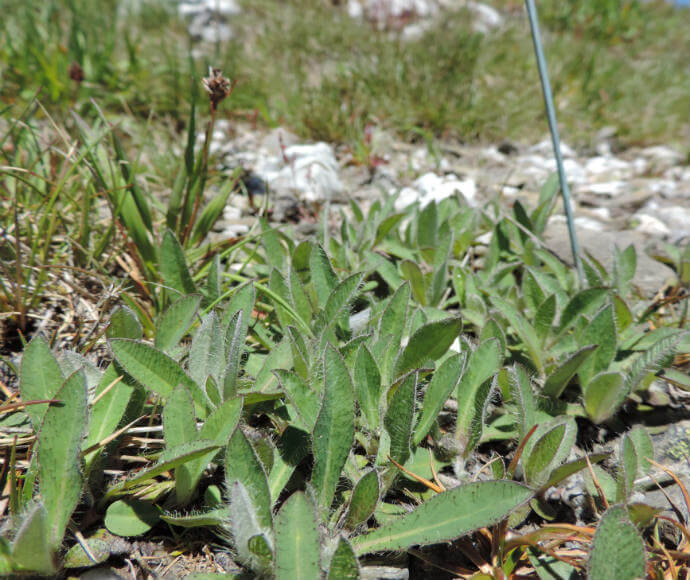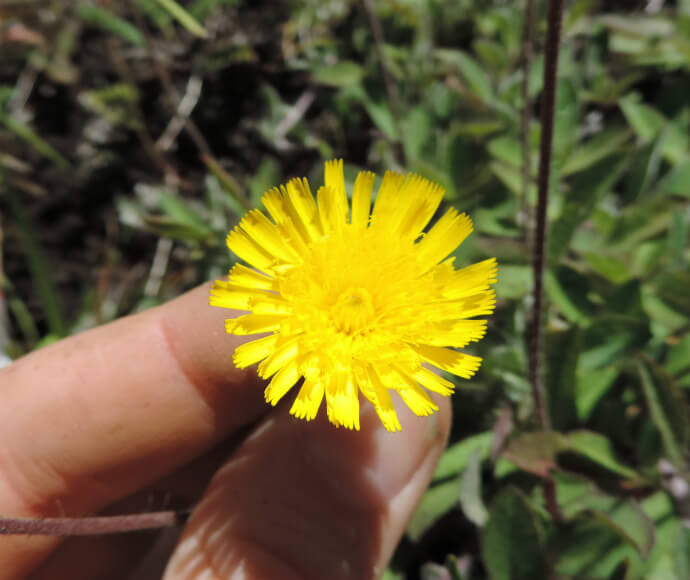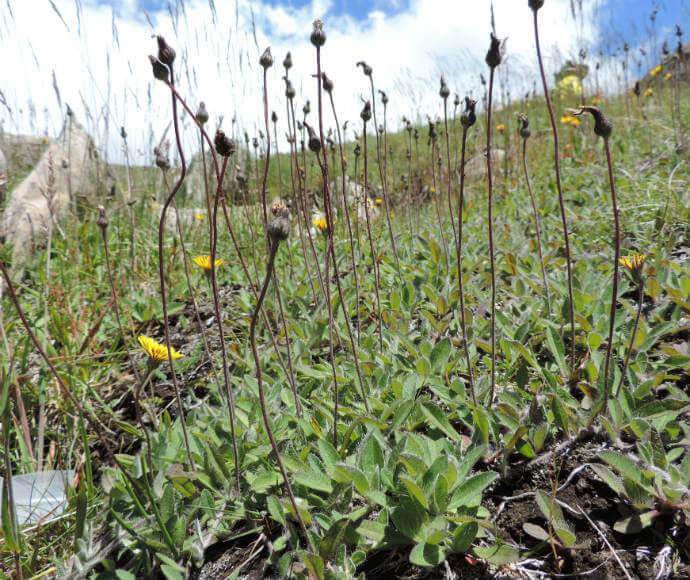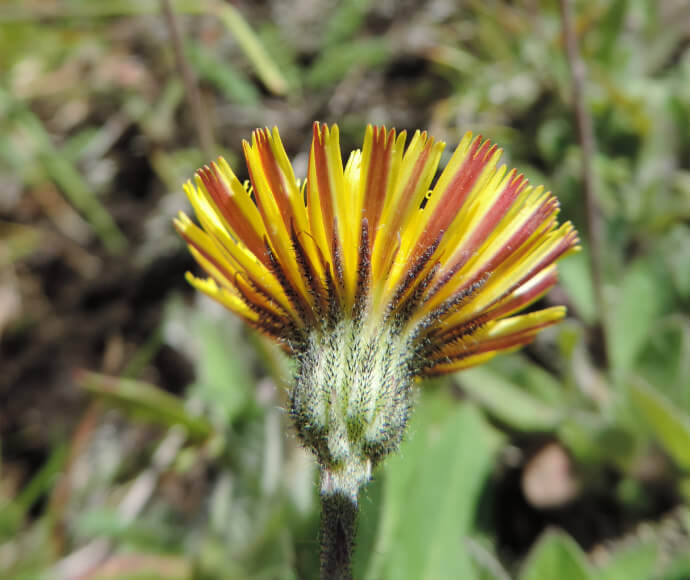What is mouse-ear hawkweed?
Mouse-ear hawkweed (Pilosella offcinarum) is an invasive perennial herb in the daisy (Asteraceae) family. It is native to Europe and Asia but now occurs as a serious weed in New Zealand, Canada and the USA.
Mouse-ear hawkweed grows close to the ground in a rosette pattern and the yellow flower head matures to release small wind-dispersed seeds. Mouse-ear hawkweed can also spread via the runners (stolons) that lie across the ground and can produce new rosettes that can form dense mats.
Other features of mouse-ear hawkweed include:
- a red stripe on the underside of petals
- leaves and stolons covered in long simple hairs
- leaf undersides that are lighter in colour and covered in felt-like hairs.
Why is mouse-ear hawkweed a problem?
All hawkweeds are listed as prohibited matter under the Biosecurity Act 2015 in New South Wales. Hawkweeds (Hieracium species) have the potential to be serious environmental and agricultural threats in the temperate areas of south-east Australia, including the Australian Alps. Mouse-ear hawkweed is a major threat to south-east Australia.
In New Zealand, it is considered the most invasive of the 9 hawkweed species present, and it significantly decreases the number of species that the environment can support (carrying capacity) in pastoral areas of the South Island high country.
In Australia, mouse-ear hawkweed is a target for eradication, as it has the potential to spread across a large area of south-eastern Australia, including New South Wales, Victoria, Tasmania and South Australia. Mouse-ear hawkweed is currently confined to small infestations in NSW and Victorian alpine areas but has the potential to expand significantly beyond there, even under future climate scenarios – see Weed Futures: Determining current and future weed threats in Australia. It is also allelopathic, meaning it prevents the germination and growth of other plants by producing biochemicals and secreting them into the surrounding soil.
Because the known infestations are small, there is the opportunity to eradicate this weed from Australia. As part of the NSW Hawkweed Eradication Program, a dedicated team of National Parks and Wildlife Service (NPWS) staff and volunteers conduct targeted surveillance to identify any new mouse-ear hawkweed plants, which are promptly controlled.
Managing mouse-ear hawkweed in our national parks
A small infestation of mouse-ear hawkweed was discovered in December 2014, near Charlotte Pass in the Main Range of Kosciuszko National Park. The National Parks and Wildlife Service has an active surveillance and control program under way to eradicate this threat. This is in conjunction with the orange hawkweed eradication program, which is active in another part of Kosciuszko National Park.
Mouse-ear hawkweed is also present in Victoria (Falls Creek), where the species is under eradication.
We use weed eradication dogs to help find and control both mouse-ear hawkweed and orange hawkweed.
How you can help and find out more
Volunteer for the 2022–23 program
Hawkweed volunteer program registration
More about our hawkweed programs
For information about future programs, please contact the NPWS Hawkweed Volunteer and Partnerships Coordinator on 0488 588 739.
View our Flickr gallery for images of staff carrying out mouse-ear hawkweed control activities in Kosciuszko National Park.
